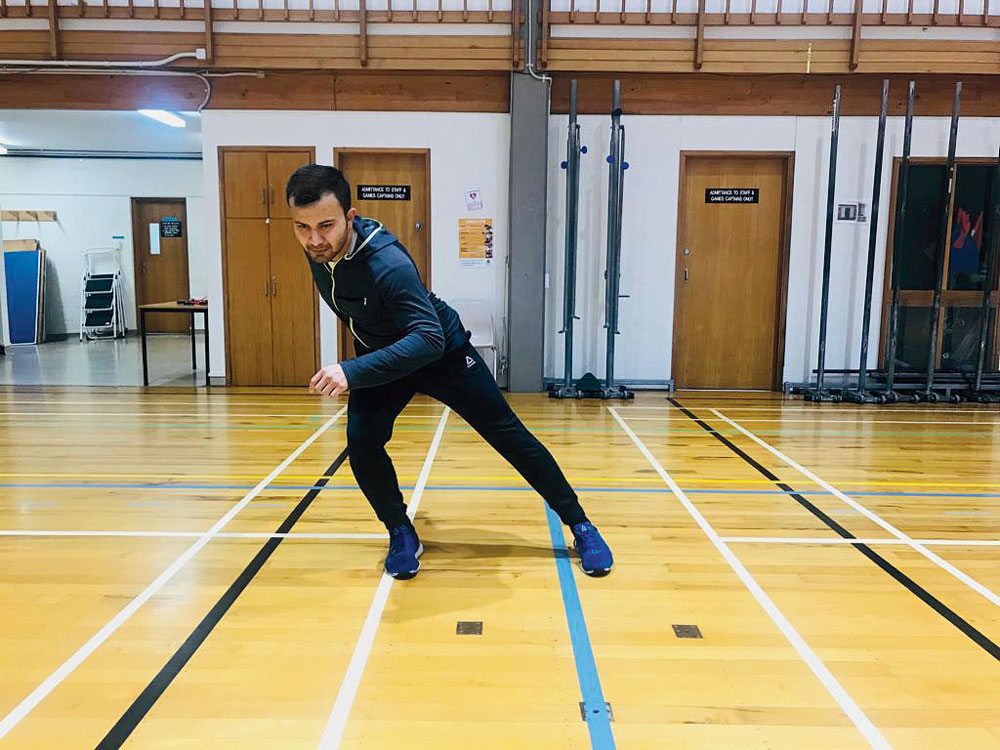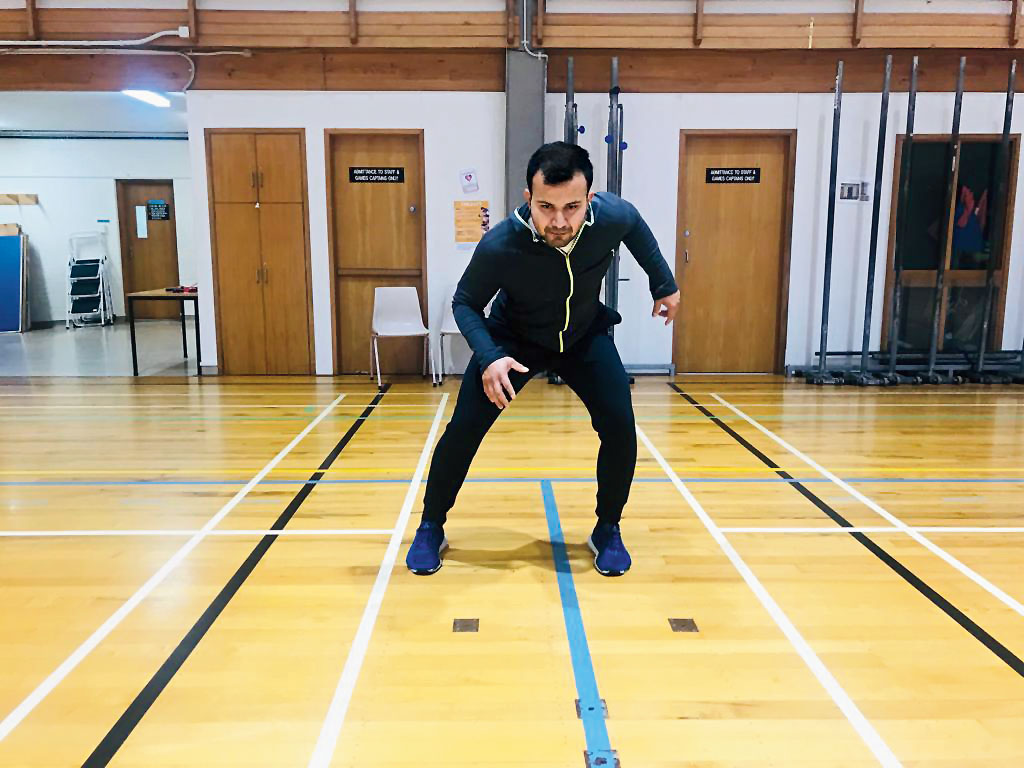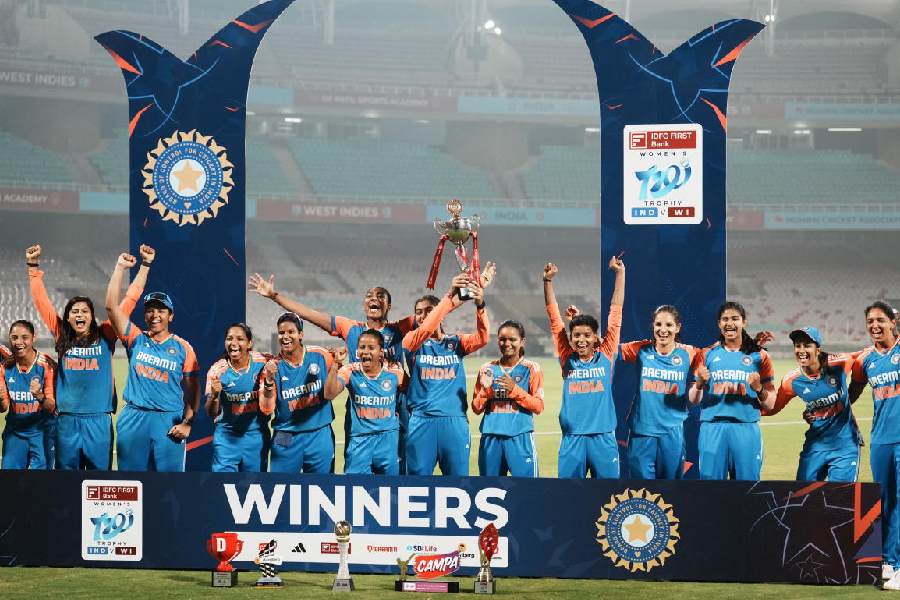Change of direction (COD) is an integral aspect of most sports. The ability to avoid a tackle quickly enough in football, steal a second run in cricket or return a shot in tennis all require effective COD strategy. Any movement that requires athletes to pivot, cut or sidestep can be considered a COD task.
Studies have reported that elite athletes are significantly better in changing direction compared to their non-elite counterparts. But it is important to understand that CODs are not created equal. COD is task-specific.
For instance, body and segmental mechanics when executing a 45° cutting task is different from a 90° or 180° cutting task. This is because there is greater inertia encountered in executing a 180° cutting task as opposed to a 90° cut. The body needs to rapidly decelerate and then reverse the direction of motion from a brief halt.
In addition, unlike straight-line sprinting, there are considerable medial-lateral (side-to-side) ground reaction forces encountered during COD. This requires greater postural control, stability and hip abduction (hip moving away from the centre of mass). Therefore, training needs to emphasise COD across various angles in order to optimally prepare an athlete.

The picture shows the crossover start position Picture courtesy: Kaushik Talukdar
The skills you need
There are two primary skills involved in COD —
a) closed skill and
b) open skill.
A closed-skill COD involves pre-planned task and emphasises on quality of movement, such as running and turning around a set distance like the 5-0-5 or T-test.
Open-skill COD, on the other hand, requires the cognitive ability to react, anticipate and make decisions, that is, react to various stimuli seen in most sports. Many programmes emphasise closed-skill COD tasks and expect the miraculous transfer to their sports without recognising if an individual lacks the ability to move well or react and anticipate.
The ability to anticipate situations in a chaotic environment and make decisions is an important part of sports. For example, a batsman can be very quick between the wickets, but unless he knows when to steal a single and coordinate with his partner on the other side, it is meaningless.
This does not mean that predetermined movements (closed-skill COD) are not useful if an athlete is unable to control her/his body position while cutting or turning. Then, by all means, building awareness in a controlled condition would be the first step.
It is, however, important to complement predetermined COD with cognitive elements because, in reality, the movement strategy seen in a controlled environment, such as running around a set of cones, can be very different to movements seen in a chaotic environment when a person is reacting to a stimulus like an opponent or a ball.
In fact, research has shown that movement strategies employed by the defenders are different from that of attackers in a football game.
Now that we know that it is important to consider both closed and open skills in order to improve the ability to change direction, let us look at some movement strategies. It is, however, important to note that specific conclusions can be drawn only after an evaluation is done considering how an athlete moves in both controlled and chaotic situations seen in sports.

The shuffle start position. The position of the body during shuffle and crossover is important as the weight has to be on the balls of the feet, the centre of mass low and ability to push off and lean Picture courtesy: Kaushik Talukdar
Closed-skill strategies
- Shuffle: This is a fundamental movement strategy in COD. In order to optimise the shuffle, one needs to maintain a lower centre of mass (staying low), push the ground away from the body (opposite leg) and stay on the balls of the feet. The ability to shuffle and maintain a good body position is a key requirement.
- Crossover: This is another important movement strategy commonly applied in changing direction. This strategy can help a sportsperson become comfortable even in the awkward body position when changing direction, that is, where the centre of mass is away from the base of support (essentially leaning away from the legs and feet).
In order to optimise the crossover, body weight should be equally distributed on the balls of the feet. Only then can the athlete lean on either side without falling over while maintaining a lower centre of mass (staying low).
Open-skill strategies
- Audio/Visual: Responding to audio and visual cues can be useful in developing the ability to react. Simple drills that emphasise either auditory and visual responses can be very effective, for instance a mirror drill (visual response) where a person tries to follow the movements of another person in front or react to unpredictable cues given by someone (audio responses).
- Anticipation/decision-making: Most sports require not only reacting to stimuli but also anticipating and making independent decisions. Therefore, creating an environment where athletes can adopt these cognitive decision-making skills is useful. This can be made specific to the sport, like football games with fewer than 11 players on each side to accelerate decision-making and anticipation skills.











